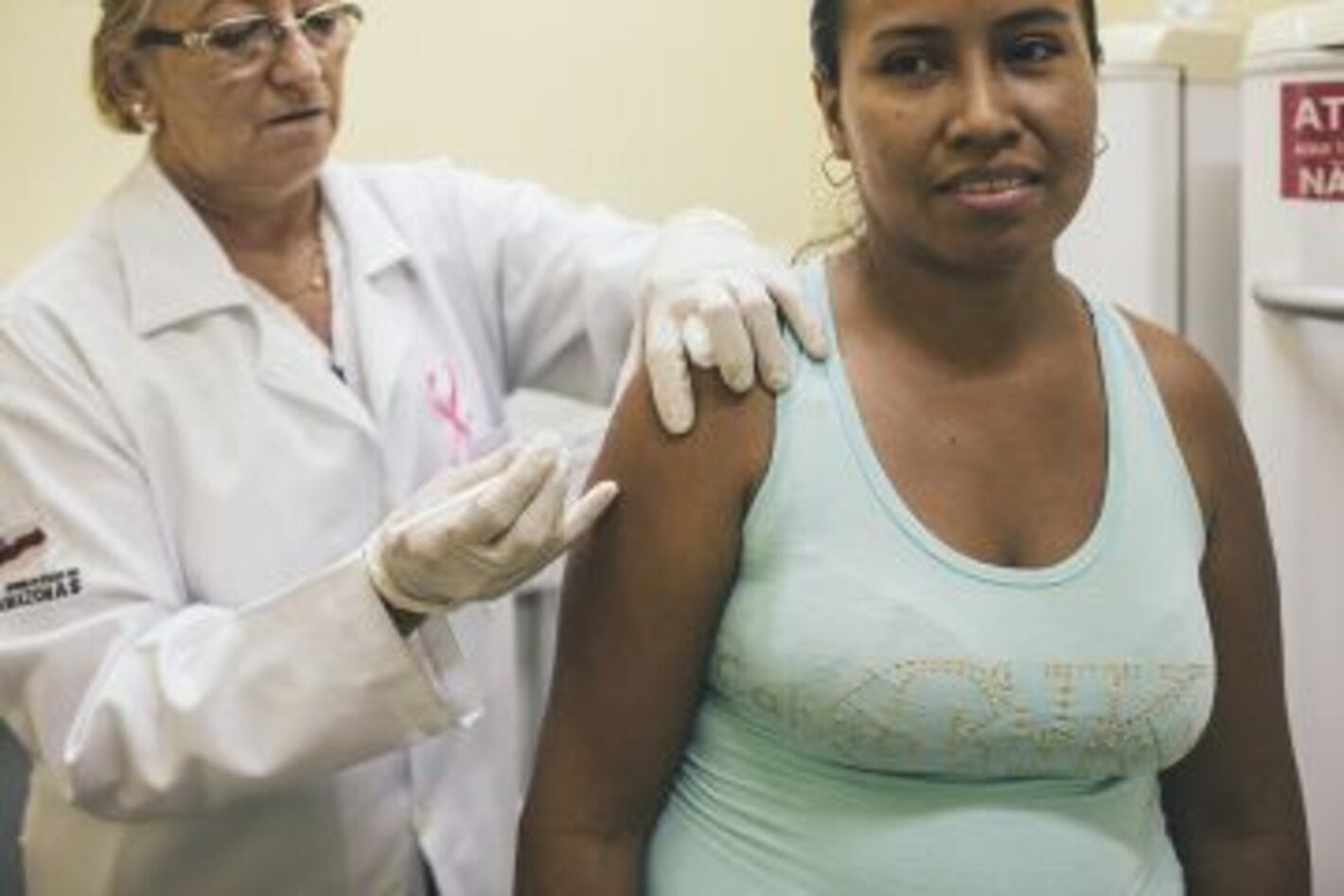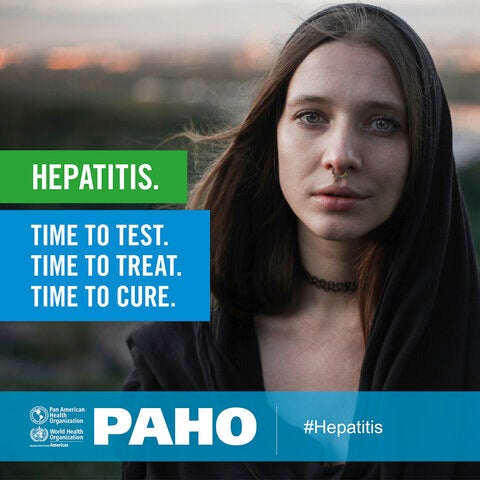
Treating hepatitis C could reduce the risk of developing liver cancer by 75%, yet only 14% of those with the virus in Latin America and the Caribbean are diagnosed and less than 1% receive treatment due to its high cost. PAHO has negotiated lower prices for the Region for hepatitis diagnostics and medicines but few countries make the most of this.
Washington, D.C, July 27 2018 (PAHO/WHO)-In the run-up to World Hepatitis Day on July 28 2018, the Pan American Health Organization (PAHO) is calling on countries in the Americas to urgently step-up efforts to ensure the timely diagnosis and treatment of hepatitis.
Hepatitis B and C affect 325 million people globally, resulting in 1.34 million deaths each year. In the region of the Americas, 3.9 million people live with chronic hepatitis B and 7.2 million with chronic hepatitis C, leading to over 125,000 deaths each year. Liver cancer is the 4th leading cause of cancer-related deaths among men and the 7th leading cause of cancer-related deaths among women in the Americas, posing a major public health problem.
Despite clear links between chronic hepatitis B and C and potentially fatal diseases such as cirrhosis and liver cancer, not enough is being done in the region to ensure prevention, detection and treatment.
"While some countries in the region have made great strides towards addressing the risks to public health posed by hepatitis, many others continue to lag behind," said Marcos Espinal, Director, Communicable Diseases and Environmental Determinants of Health, at PAHO/WHO. "We know that treating hepatitis C can lead to around a 75% reduction in the risk of developing liver cancer, yet just 14% of those with hepatitis C in Latin America and the Caribbean are diagnosed, and less than 1% receive life-saving treatment."
World Hepatitis Day 2018
The theme of this year's World Hepatitis Day is "Time to test. Time to treat. Time to cure." The day will focus on promoting three primary objectives:
- To support the urgent scale-up of hepatitis prevention, testing, treatment and care services
- To showcase best practices and promote universal health coverage of hepatitis services
- To improve partnerships and funding in the fight against viral hepatitis
To mark the occasion and ensure that countries are best equipped to tackle the issue, the World Health Organization (WHO) has released new guidance on the treatment of hepatitis C, calling for an expansion of access to innovative curative treatments to all those over the age of 12 living with the virus, and the inclusion of effective hepatitis B and C treatment in national health insurance systems.
Hepatitis in the Americas
During 2015 and 2016, Ministers of health from throughout the Americas agreed on a series of actions to reduce the public health burden of hepatitis and eliminate hepatitis as a public health problem by 2030. Since then, efforts to ensure vaccination against hepatitis B have continued, with all countries in Latin America and the Caribbean vaccinating children under 1 year of age, 22 of which do so within the first 24 hours following birth, in accordance with recommendations from WHO.
However, when it comes to the treatment of those living with chronic hepatitis C, much remains to be done. New advances mean that over 95% of those infected could indeed be cured, yet across the region, the vast majority of people living with hepatitis C do not have affordable access to these highly effective medicines. Treating the virus with directly acting antiviral (DAA) drugs, for example, can cure hepatitis C in less than three months.
Few countries of the region have accessed lower priced DAAs for hepatitis C through the PAHO Strategic Fund, which enables them to pool resources in order to access affordable, strategic and quality assured medicines. "It is vital that other countries make the most of this initiative, while also developing testing, treatment and elimination plans to reduce the high burden of healthcare costs associated with late diagnosis, liver cancer and cirrhosis, and most importantly, to save lives," said Espinal. "We know that government efforts to increase the availability of treatments have a huge impact on reducing the number of those suffering from chronic hepatitis and related liver disease," said Espinal. In Brazil, for example, in 2017 the Ministry of Health set the goal of eliminating hepatitis C, and DAA drugs have been made available through the National health system.
Hepatitis
Hepatitis is an inflammation of the liver, most commonly caused by a viral infection by one of the five main hepatitis viruses (types A, B, C, D and E). It can result in acute infections and lead to chronic liver disease, cirrhosis, cancer or even death. Hepatitis B and C infections are transmitted through contaminated blood as well as through contaminated needles and syringes and among people who inject drugs. The viruses can also be transmitted through unsafe sex and from an infected mother to her newborn child.
Hepatitis B and C are chronic infections that can remain asymptomatic for long periods of time, often for years. The good news is that early testing and treatment prevents the complications of hepatitis C. Thanks to advances in treatment, new medicines can cure hepatitis C in just three months or less. The updated guidance from WHO calls for all adults, and children over 12 years, living with hepatitis C to be treated with these new drugs.




